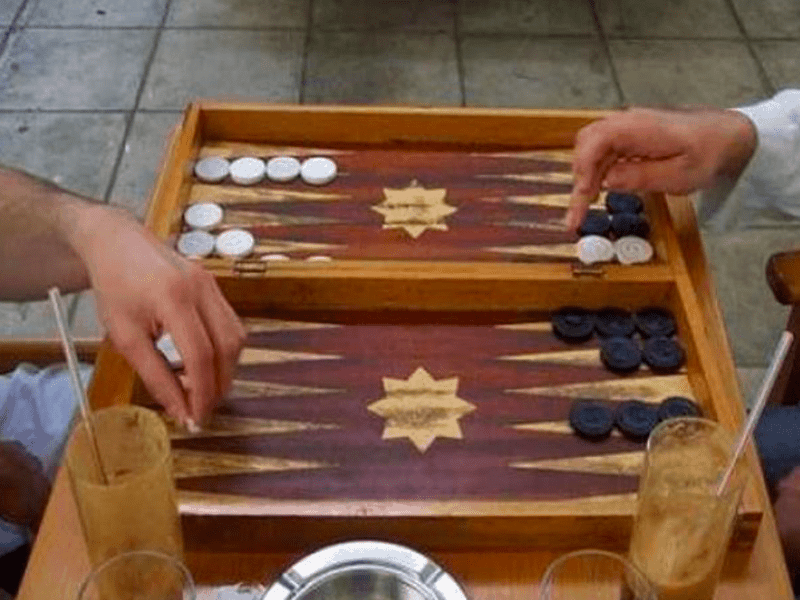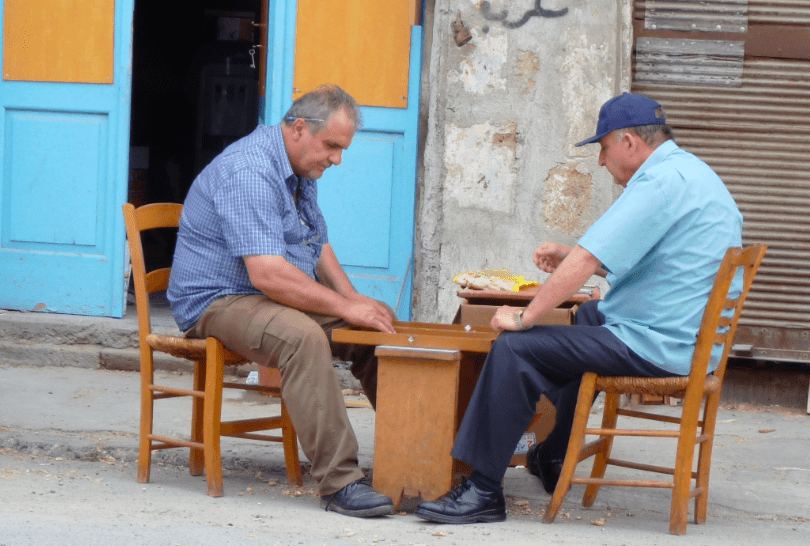
In every kafeneio around Greece and many Greek run cafes worldwide you are guaranteed to find people playing the beloved game of 'Tavli'. Although it looks like the 'western' game of backgammon, there are different rules to Tavli, Greece’s longest running and favourite board game, which dates back to ancient times.
Tavli means "board" in Greek and there are three games of Tavli commonly played:
Portes – most similar to Western backgammon
Plakoto – a game where one checker can trap another checker at the same point
Fevga –where one checker by itself can block a point
These games are played one after another, in matches of three, five, or seven points.
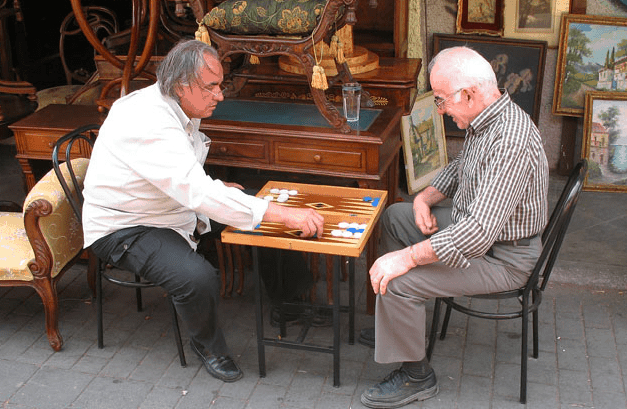
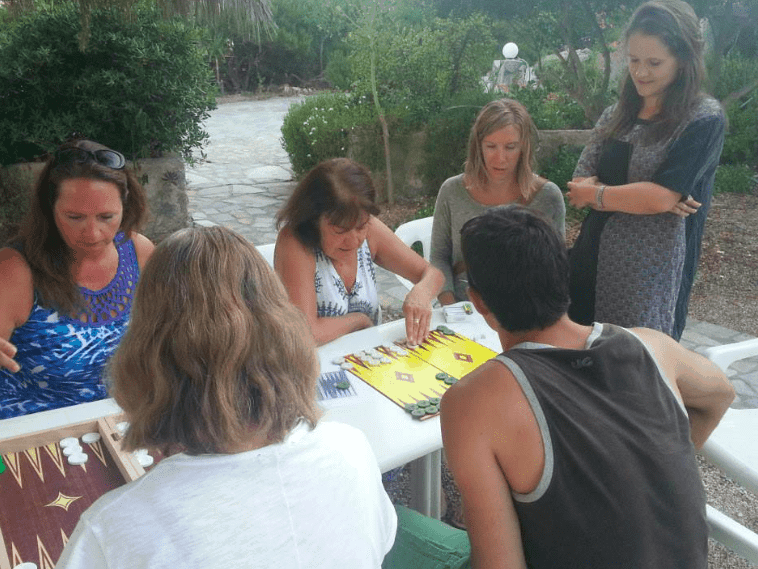
The games of Tavli have the following rules in common:
- Only one pair of dice is used, and they are shared between the players.
- In the first game, each player rolls one die and the higher number goes first. That player then rolls the dice again to begin his first turn.
- After the first game, the winner of the previous game goes first.
- The first player to bear off all his checkers gets one point, or, if the winner bears off all his checkers before the loser has borne off any, he gets two points. There is no triple game.
- No doubling cube is used.
Pace of play:
Tavli is played very quickly. You do not need to wait for your opponent to pick up the dice—you pick them up yourself while he is making his move.
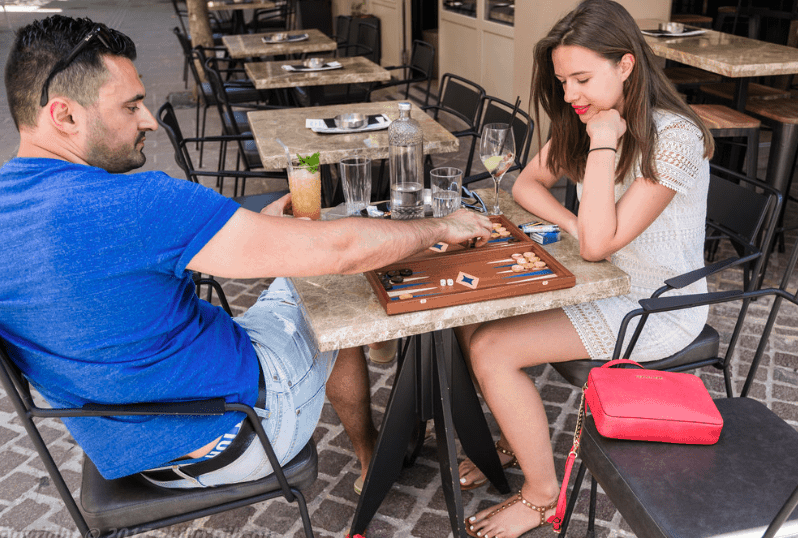
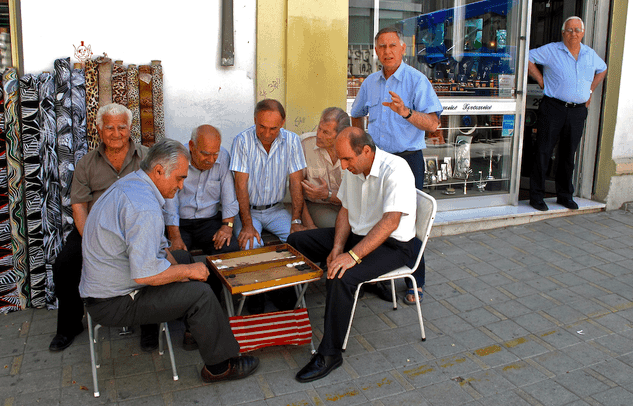
Rolling too early:
However, you must not roll the dice while the opponent is still making his move. As long as he has a checker in his hand, or even still has his finger on it, you must wait. If you throw too early, the roll does not count and you have to roll again.
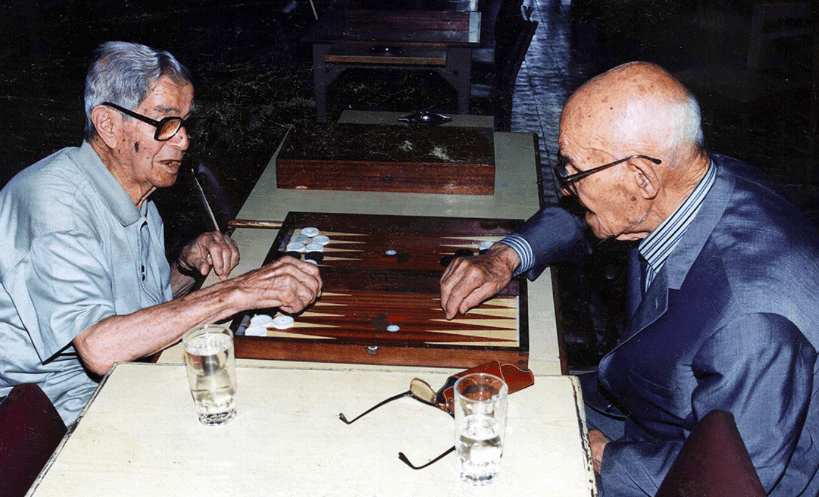
The general differences between Greek and 'western style' Backgammon:
- No doubling cube is used
- Gammons and Backgammons count the same (2 points)
- Only one pair of dice is being used and it can be thrown in either side of the board. If a dice lands on a checker or does not lay correctly, both dice must be thrown again
- In the first game the beginner is the one, who throws the highest number. Then he rolls again and starts with these numbers (so it is possible to start with doubles). In all the following games the winner of the last game starts the new game
- A move is done when the opponent rolls the dice: This needs some further explanation I think (X against O, X on roll): Normally O picks up the dice while X makes his move. As long as X has a checker in his hand (or his finger on it), X may change the complete move. If X has finished his move, O may throw the dice and the move is over. If O throws the dice to early, it does not count and he has to throw them again. This way of making the moves allows fast and uncomplicated games
It is definitely addictive and Greeks of all ages worldwide spend hours on end playing with friends and family at local cafes and at home, mostly while sipping on a coffee, or an Ouzo!

